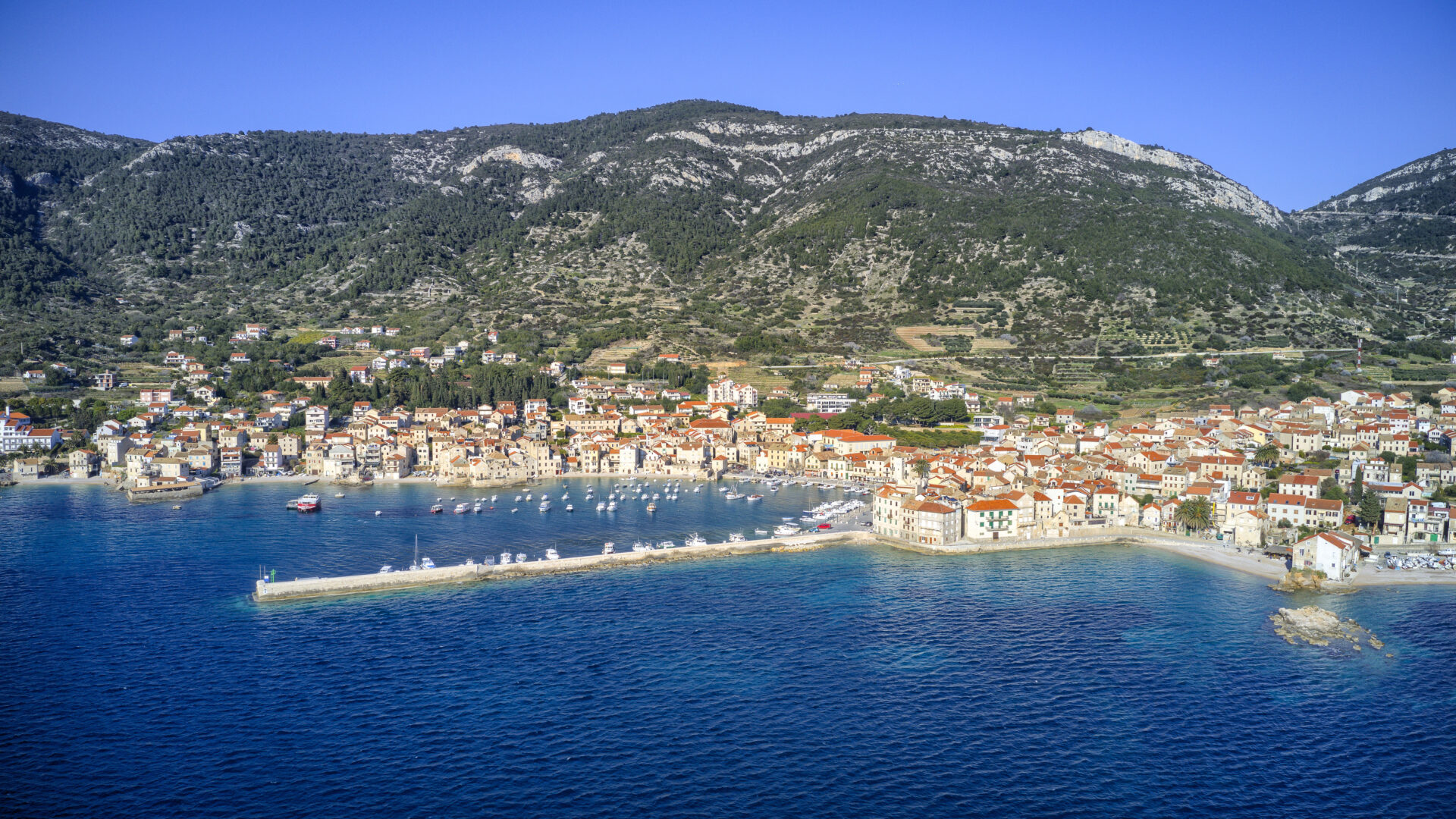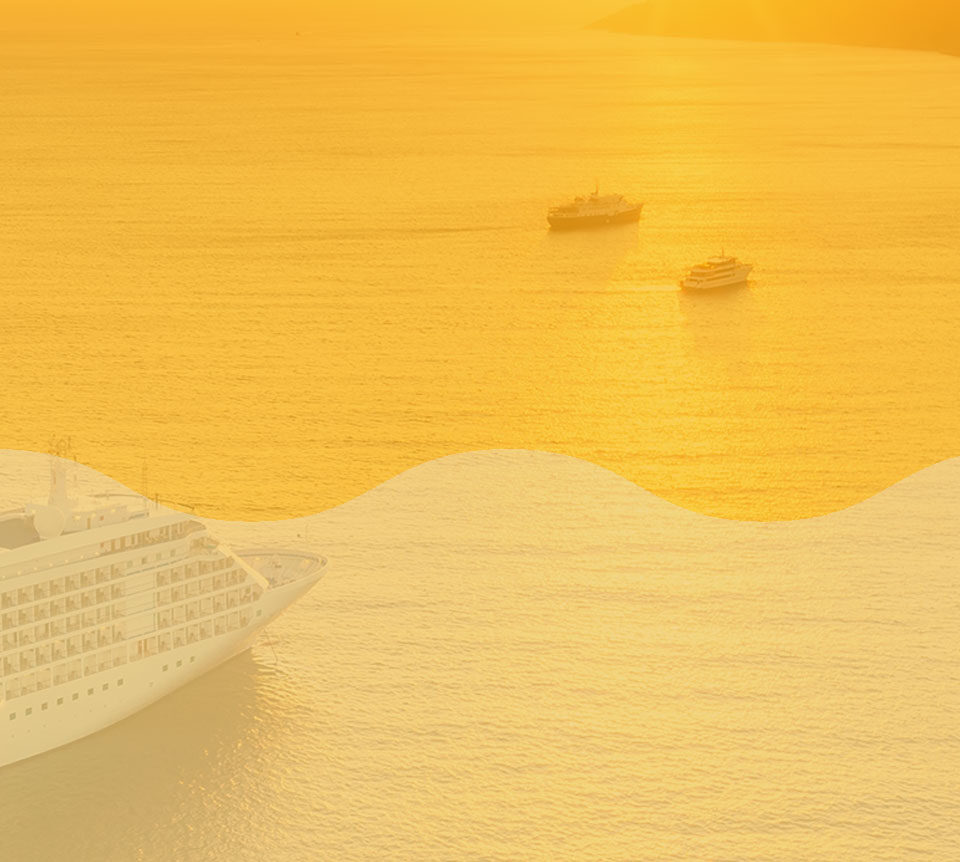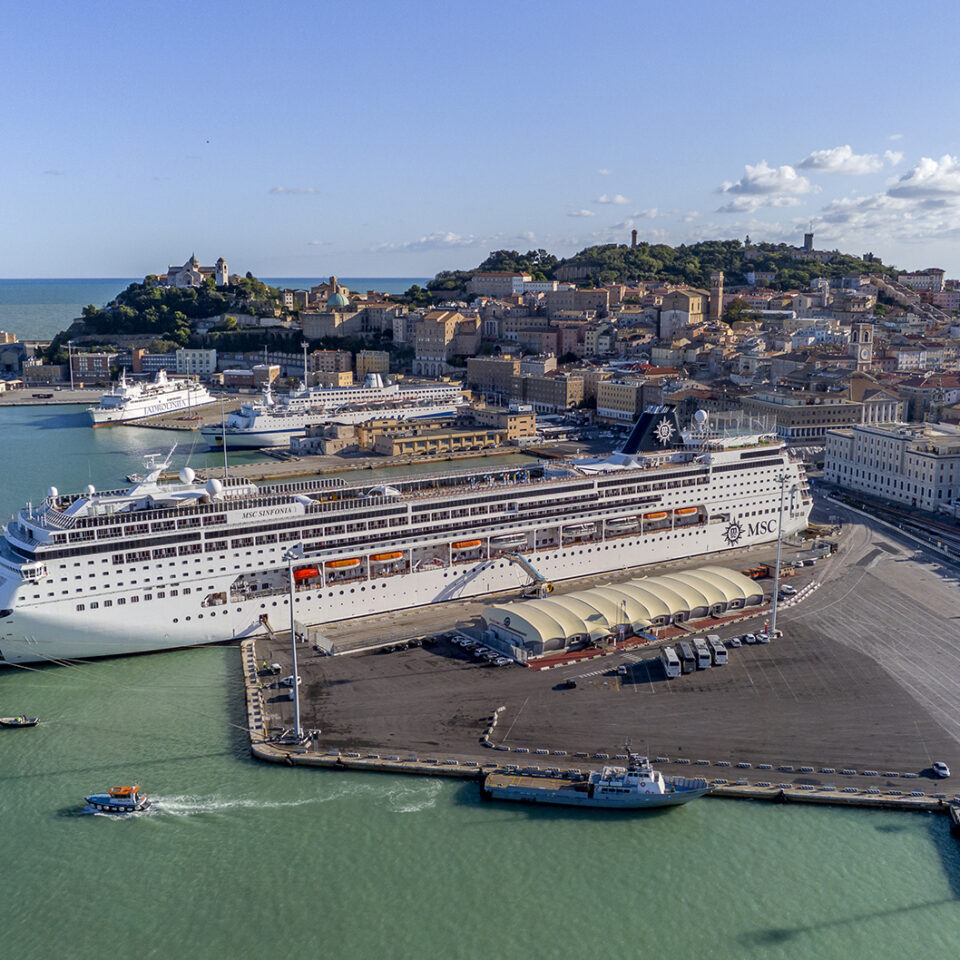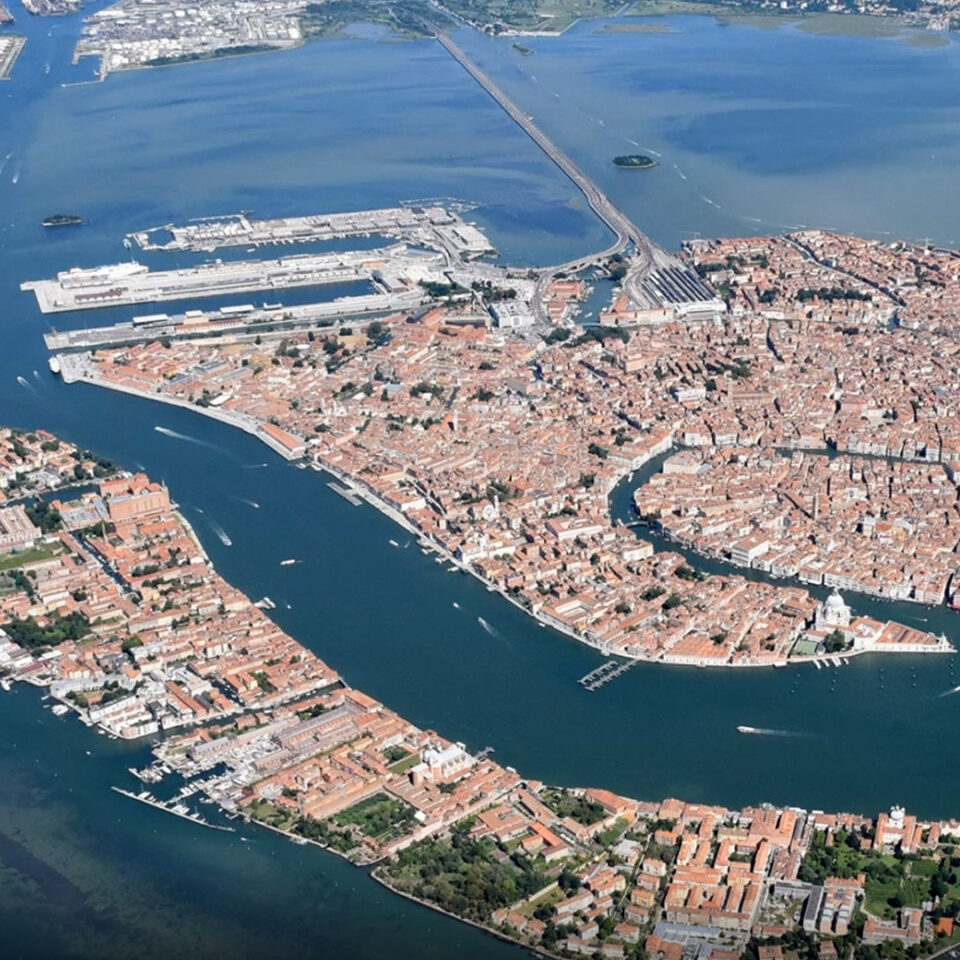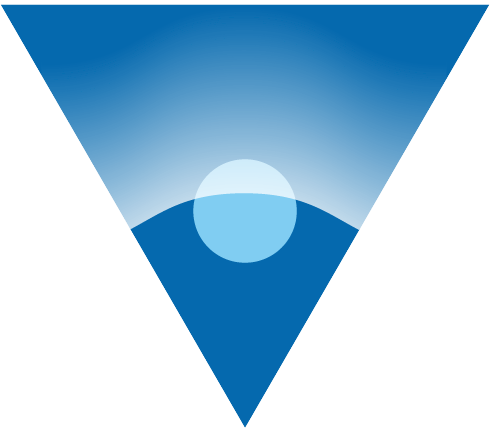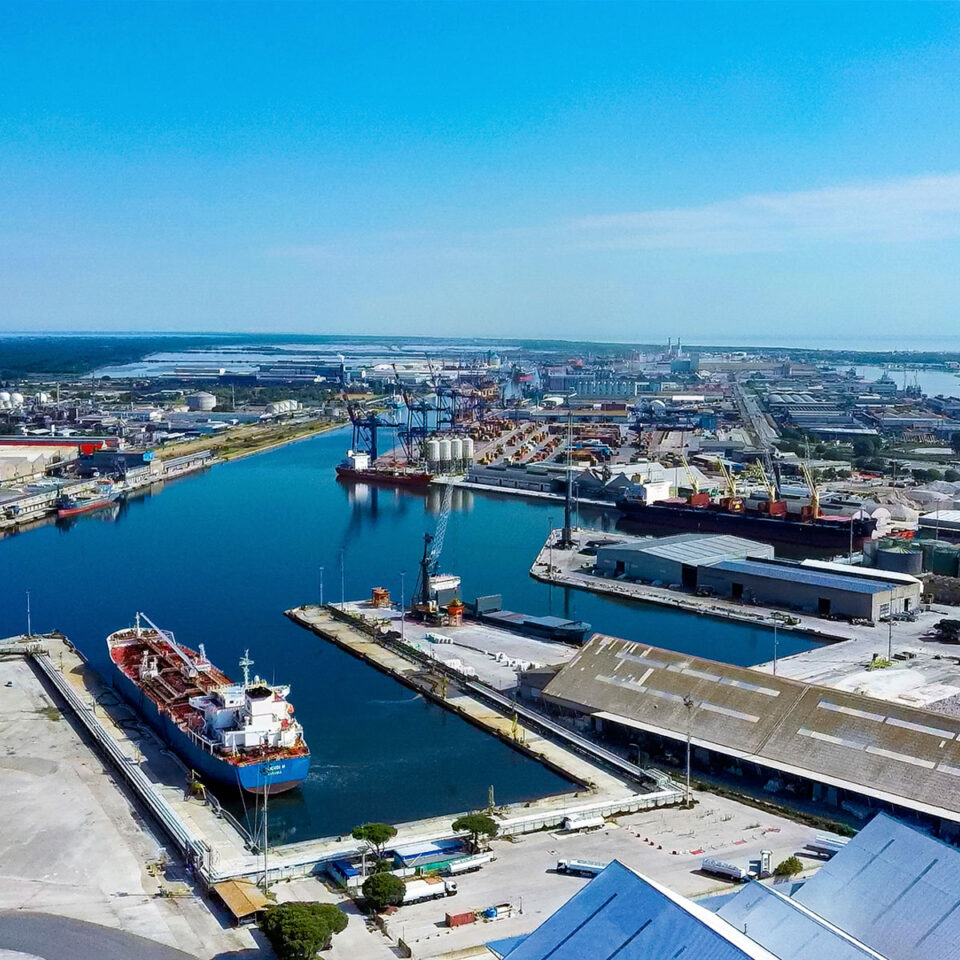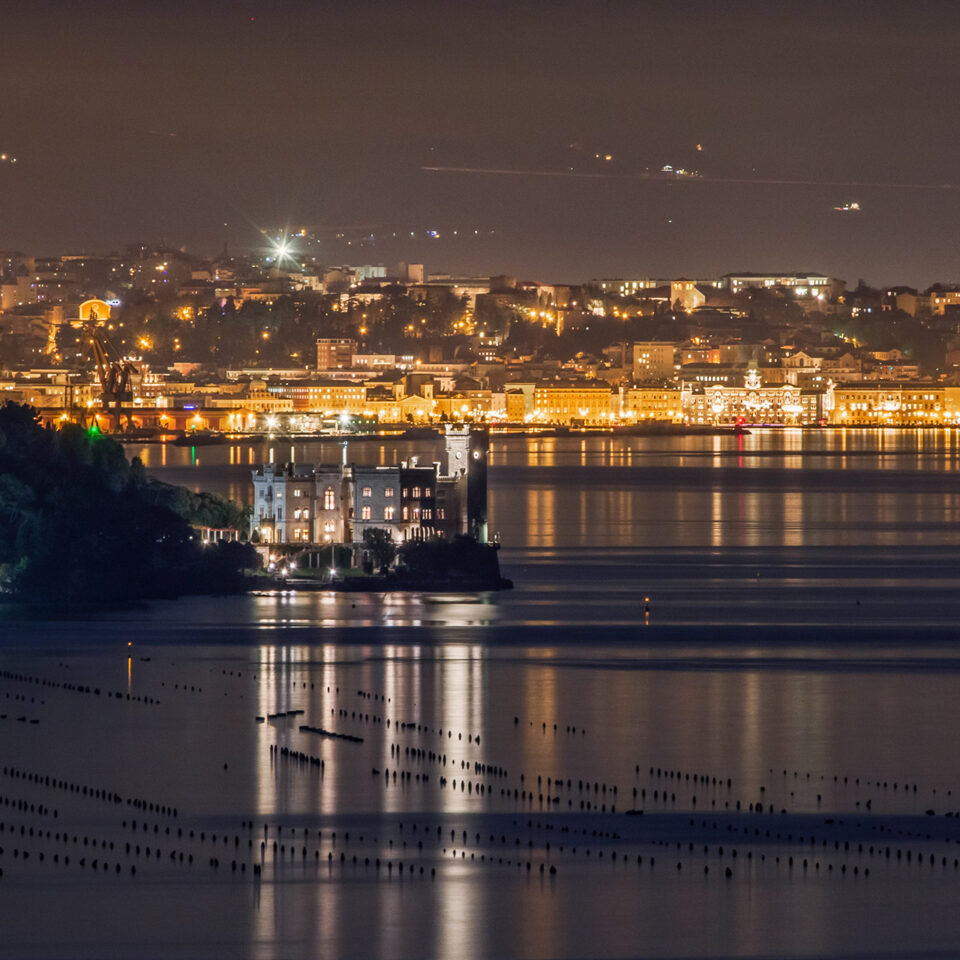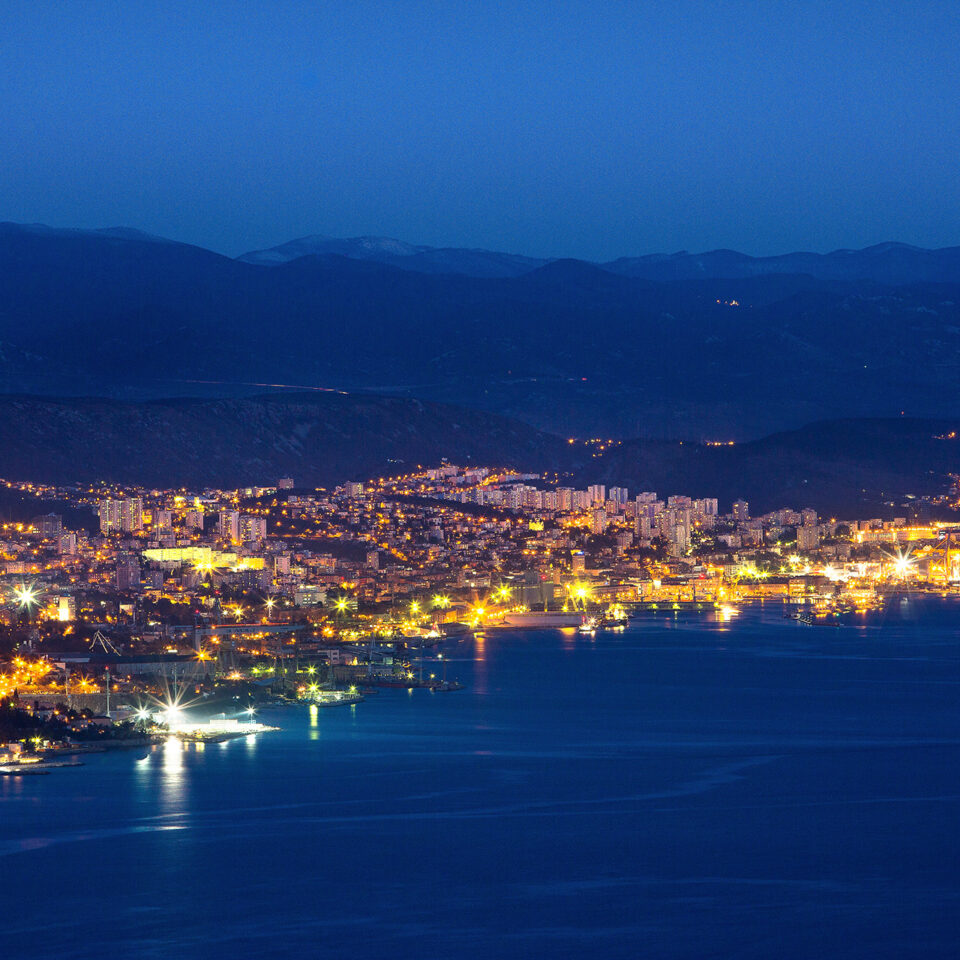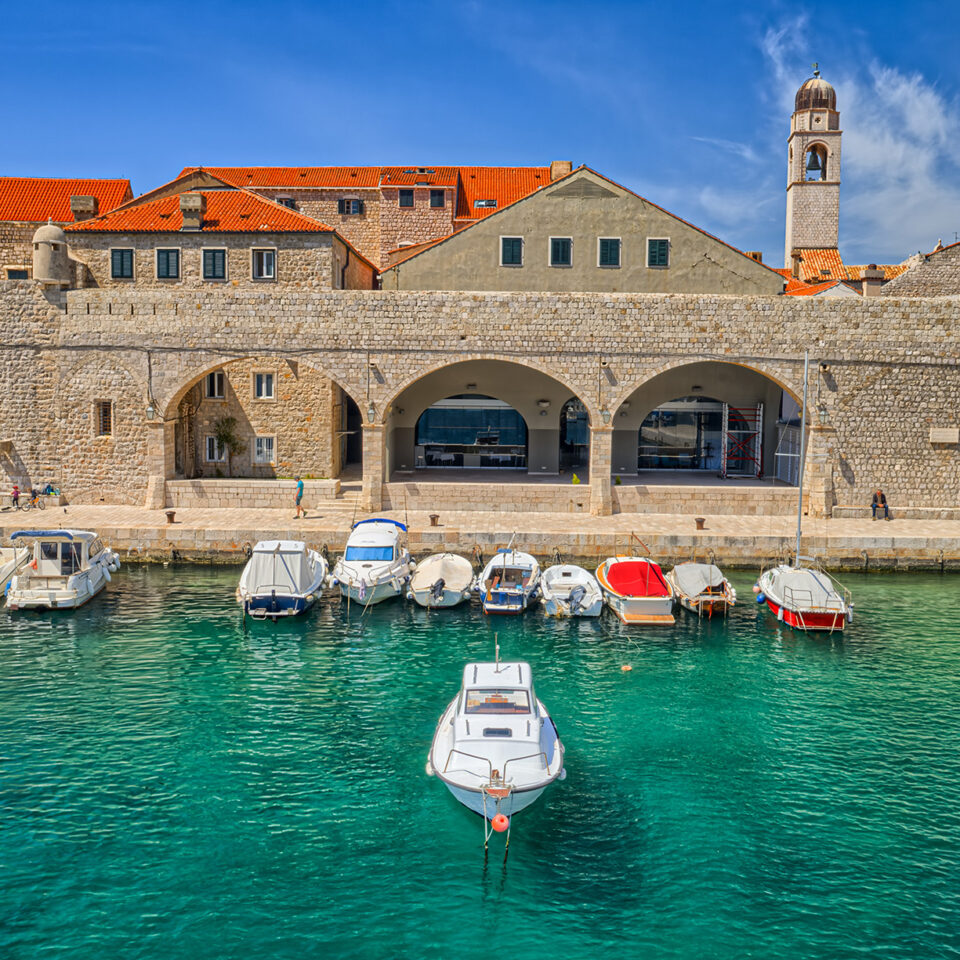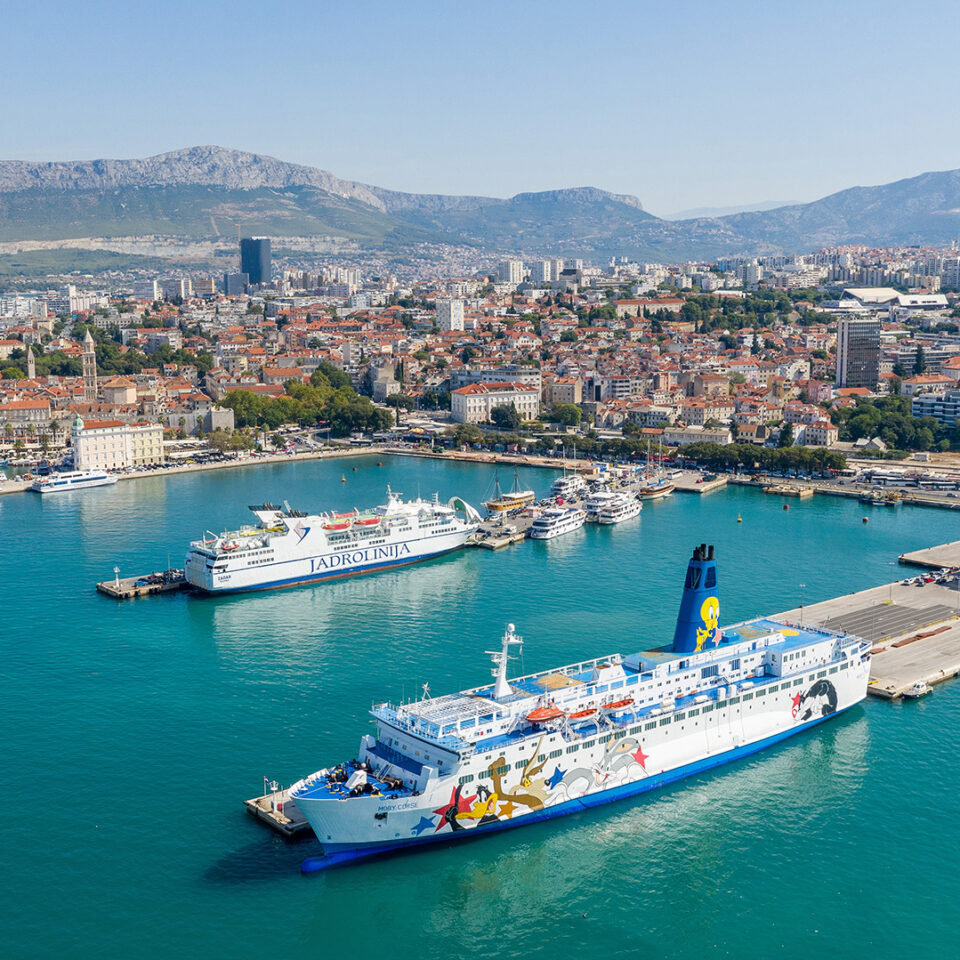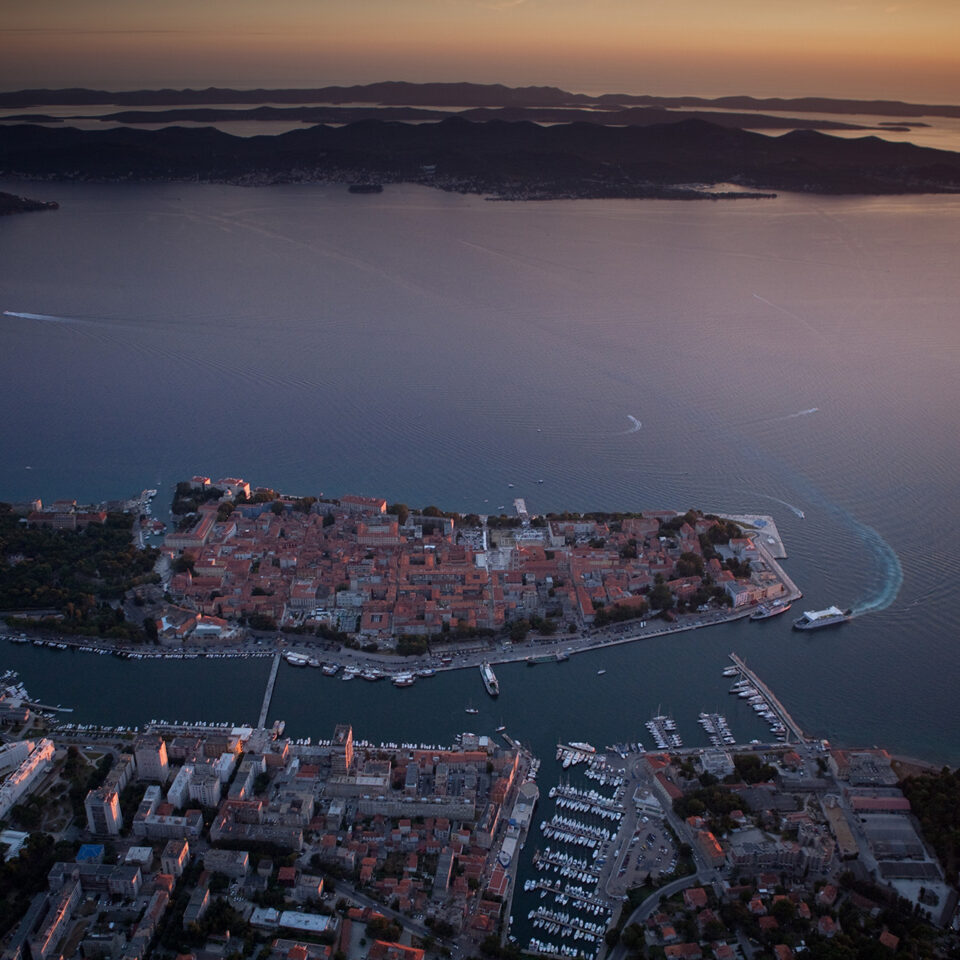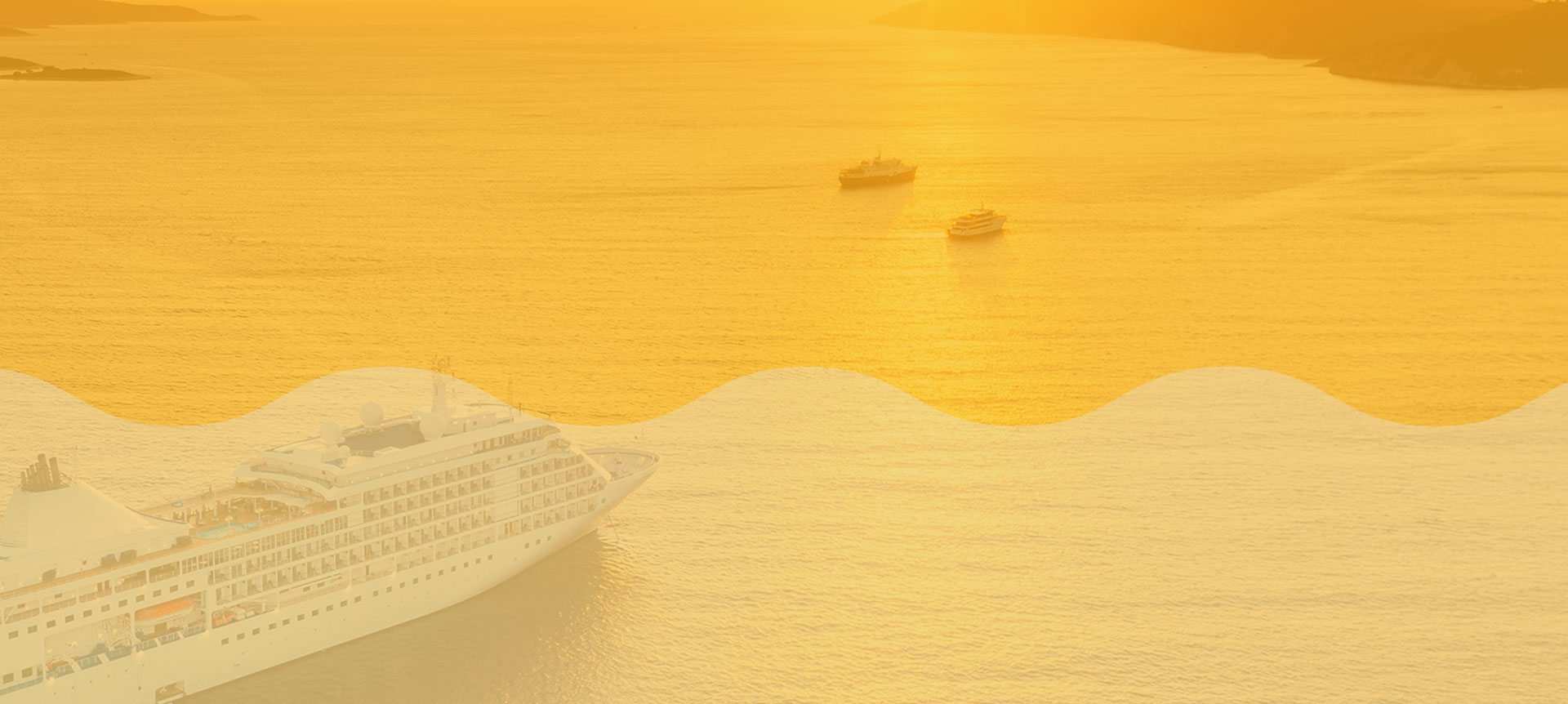

TANGIBLE AND INTANGIBLE HERITAGE OF THE VIS ARCHIPELAGO
- THE VIS ARCHIPELAGO
- Introduction
The Vis Archipelago encompasses a triangle-shaped area circumscribed by three insular points in the central Adriatic: the island of Vis, the island of Jabuka which is located 30 nautical miles west of Vis and the island of Palagruža, located 40 nautical miles south of Vis. Within this area which, together with Croatia’s territorial sea, encompasses more than 6600 km2 there are a number of small open-sea islands such as Sveti Andrija, Brusnik and Biševo, and a few islets off the coast of Vis. It is only in the central Adriatic that we can find extraordinary geological phenomena, due to the tectonic activity which shaped its islands and the underwater zone, making it the richest fishing zone of the Adriatic. These removed and scarcely populated islands boast not only a unique geological history but also a fascinating story featuring fishermen and the fishing tradition. The fisherman story was passed to younger generations by means of oral tradition, and for this reason this story was preserved in the collective memory of these open-sea islands. However, today this same story is slowly fading from the island’s collective memory, this story which was never the subject of official historiograpies but has nonetheless survived and passed from one generation to another by word of mouth. For centuries this story had a receptive, younger audience, but nowadays this audience is slowly disappearing, as well as the intergenerational transfer of stories. For hundreds of years this connection between generations has kept alive and preserved the island’s collective memory in the local dialect. This dialect, now barely comprehensible, has preserved the archaic Slavic language structure. Ever since the Slavic tribes first arrived to the Adriatic, their language has been continually exposed to the influence of Romans and other Mediterranean idioms and vocabularies. In addition to available written sources documenting the history of fishing, the author Joško Božanić relied even more so on the sources of oral tradition, which was the main focus of his fifty-year long research of the history of fishing on the island Vis.
The Vis Archipelago is a central Adriatic maritime zone whose very center comprises the island of Vis with surrounding open-sea islands and islets: Ravnik, Budihovac, Jabuka, Brusnik, Sveti Andrija, Biševo and Palagruža. This is the only part of the Adriatic whose geological history (some 220 million years ago) was marked by large scale changes featuring the lifting of the diapir – a large mass of hot salt – from the Earth’s core towards the surface. This rising mass pushed against and pierced through the upper layers of sedimentary rocks formed from petrified sand and seashells. The center of this tectonic break-through was in the spacious Komiza Bay, and the peaks of this magmatic uprising rise above the sea in the form of present-day islets of Jabuka and Brusnik, or have remained underwater as present-day seamounts of Kavalina, off the coast of Brusnik, and Gatula, Sika od Trešjovca and Tara, off the coast of Biševo. These underwater seamounts are rich fishing posts. Another island interesting for its geological phenomena is Palagruža, the most remote island of the Vis Archipelago. This island is, in geological terms, the oldest island on the Adriatic. A unique type of rock was discovered on Palagruža, and was accordingly named pelagozit, after the island’s Italian name – Pelagosa (derived from the Greek word pelagos – open sea, thus the island of the open sea).
In prehistoric times the present-day Adriatic islands were mountains’ peaks. The streams of present-day rivers of Krka, Cetina and Neretva once reached these very mountains, winding through a spacious valley which was the Adriatic basin, until the sea level rose in the Late Glacial Period some twelve thousand years ago and flooded this valley, thus turning the former mountains into islands. Large deposits of Aeolian sand can be found in the northeastern part of Vis, as a reminder of its turbulent geo-history. The sand now covering the vast fertile fields on Vis was carried by fierce northern winds, which swept down from the Dinaric Alps and across the flat fields of sand (savannas), depositing it on the mountains’ sides. Plenty of other geomorphological phenomena found here were formed under pressure of natural forces – caves and bays, rectangular stacks of stone blocks and cave openings. This can best be seen on the southern coast of Vis, most exposed to strong southern winds.
1.2. Vis – “Gibraltar of the Adriatic”
The British called Vis „The Gibraltar of the Adriatic” in the early 19th century, when this island was the only British trade station (porto franco) for commerce with Europe, during the time of Napoleon’s Continental Blockade. Vis is also known as a site of a major naval battle which took place in 1866 off its coast – the first ever naval battle to take place on steel boats. In this battle the Austro-Hungarian navy defeated the powerful Italian armada headed by the „Re d’Italia“ war ship, which sunk off the northern coast of Vis. The shipwrecked armada can still be seen on the Adriatic seabed today. During WWII the island of Vis was the only free European territory, unlike the rest of the continent occupied by Hitler’s forces. The Yugoslav partisan forces led by Josip Broz Tito, and their British allies fought back together and defended the island.
1.3. The Blue Corridor
Based on available scientific research unveiling the exceptional continental and marine biodiversity of flora and fauna on Vis, the World Wildlife Fund (based in Rome) has included the Vis Archipelago in the Adriatic Blue Corridor (2003): „Based on international scientific analysis we have proclaimed „The Blue Corridor“ as the zone of greatest biodiversity.“ This corridor includes the islands of Sveti Andrija, Brusnik and Biševo, the north-western and south-eastern part of Vis, including important fishing posts around the islands of Sušac, Jabuka and Palagruža.
1.4. Paradise Oasis of the Mediterranean
The World Wildlife Fund has also proclaimed the Vis Archipelago to be one of the ten last „Paradise Oases of the Mediterranean“. The reasons for its inclusion lie in the uniqueness of its natural phenomena (monuments of nature, ecological preservation of environment, biodiversity), tangible and intangible cultural heritage and the historical importance of Vis as the crossroads of maritime routes, making it the main stage of many important historical events in Europe since the Age of Antiquity. The Vis Archipelago is a space with the greatest concentration of natural monuments in Europe: The Green Cave (island of Ravnik), Stiniva Beach (southern coast of Vis), The Monk Seal Cave, The Blue Cave (island of Biševo) and the volcanic islets of Jabuka and Brusnik.
1.5. The Stormy Archipelago
A native of Zagreb and a nestor of Croatian investigative journalism, Franjo Fuis, often frequented Vis and Komiža in the 1930s. He would spend months in a row on a small open-sea island of Sveti Andrija or Svetac in short (eng. Saint Andrew’s island, frequently referred to by the shortened name of Saint) to learn about this island, previously unknown to him, and the fascinating world of its open-sea fishermen. He shared the fishermen stories with the world, through photographs and news reports. This unknown insular world, whose fate was determined by the laws of the open sea, Fuis poetically named a stormy archipelago.
The newspaper texts by Fuis caught great attention in the 1930s, and attracted curious artists to the „Adriatic Galapagos“: painters and poets flocked to Svetac and formed a unique artists’ colony on this small island, thirteen nautical miles removed from Komiza. A number of painters such as Ignjat Job, Đuro Tiljak, Mirko Kujačić and Vinko Foretić depicted this open sea world of fishermen on their oil paintings, graphics and lithographs, and the poet Tin Ujević wrote his travelogues in which he expressed his fascination with the world of open-sea islands: „I am on the Adriatic Philippines right now. Americans may admire Hawaii, but no island is as brilliantly beautifully as this one. I am in a deep heart of a deep sea (A Thread in the Heart of the Sea, 1930).
1.7. Halieutica
The adjective halieutic used in the title was derived from the epic poem Halieutica of the Greek poet Oppian of Cilicia (3rd century BC). Oppian wrote this poem on fishing while in exile on the island of Mljet, and he named it to honor the Roman poet Ovid who also composed an epic poem on fishing called Halieutica. This word originally means fishing, it denotes a primarily human activity, the oldest human craftsmanship at sea, and at the root of this word is the Greek word hals which is one of the five names for sea in Old Greek (thalasa, kolpos, pelagos, pontos and hals). The word hals also means salt – thus the sea as essence (the sea’s essence is salt).
- FALKUŠA – A BOAT FROM THE NURSE OF ROME’S FOUNDER
2.1. A boat from the depths of time
A story about falkuša is more than just a story about a certain type of fishing boat rescued from oblivion in the nick of time. It is a story about an insular world of the farthest inhabited Croatian island – the island of Vis. It is a story about collective memory preserved through the oral tradition of an island which safeguards its cultural uniqueness, but which also belongs to the universe of the Mediterranean maritime culture.
Falkuša as a type of the fishing boat probably has its origins in the traditions of ancient Greece, which is evident in its very name falkuša, derived from the Greek word falkes = fence, which arrived in Greek from the Arabian word halka = ring, and which refers to the mountable wooden side boards (falke) mounted as additional protection in high water and dismantled so the lower boat sides can give the fishermen more maneuvreing space while fishing. The word gajeta was derived from the Italian town of Gaeta on the coast of the Tyrrhenian Sea. The town Gaeta was named after the Trojan hero Aeneus’ wet nurse Caieta, whom Aeneus took along with him on the journey across the Mediterranean, after the fall of Troy. Caieta, as Virgil sings in his epic poem Aeneid, died on the beach where she was then buried, and the town founded there was named after her. These written sources point to the great antiquity of this type of boat known across the Mediterranean, from the Greek islands (Crete), Italian (Sicily), Spanish (Palamòs) and Portuguese (one such boat can be found in the Maritime Museum in Lisbon). Gajeta falkuša boats on the Adriatic were built by boatbuilders from the island of Korčula, almost exclusively for Komiza fishermen, and the falka side boards were constructed in Komiza.
As the maritime nation, Greek colonists have brought from the homeland of Syracuse to the island of Vis not only a highly developed art of boatbuilding and navigation, but also their fishing craftsmanship. Archeological findings on the island of Vis are evidence of this, such as the ceramic weights for the fishing nets and hooks forged in bronze, a depiction of a dolphin on the reverse face of Issean coins and Roman thermae mosaic floor, and depictions of fish on Issean vases.
The gajeta falkuša boat is also a central figure in the unique fishermen regatta from Komiza to Palagruza, which is the longest rowing marathon in the world. During calm seas the rowers had to row continuously from sunrise to sunset, so they could reach the 42-mile remote Palagruža on their heavily loaded boats.
2.2. A Boat Born of Fire
The shipwreck of the last gajeta falkuša in 1986 marked the beginning of interdisciplinary research initiated by the researh team of ARS HALIEUTICA, a cultural institution from Komiža. The news of the last gajeta falkuša shipwreck and her rescue arose the curiosity of Dr. Velimir Salamon, a marine architect from the University of Zagreb. He was so fascinated by this boat and the stories told by the local fisherman Ivan Vitaljić Gusle, that he decided to join the ARS HALIEUTICA team and embark on a joint venture of researching the phenomenon known as the gajeta falkuša boat.
Before all of this took place, the author had spent decades systematically recording oral tradition of fishermen from Komiza: stories, legends, important events, recollections, words and proverbs. In short, he researched the experience in the art of fishing, shipbuilding and navigation shared by the last fishermen of Komiza’s fishing epic.
In August of 1995, ARS HALIEUTICA teams set out to cut down wood for the new falkuša boat. Pine wood used in the construction of falkuša’s frame was traditionally cut on the island of Sv. Andrija (eng. St. Andrew’s Island), a remote island inhabited only by one woman by the name of Antonija Zanki.
The new falkuša boat rose out of the ashes of the boat burned in a traditional rite on December 6, 1997, in honor of St. Nicholas, the saint protector of all sailors.
On June 7, 1998, during the Croatian Day at the EXPO 98 World Exhibition in Lisbon, the crew of the new „Comeza Lisboa “falkuša boat scattered the ashes of the sacrificed Komiža boat into the Tejo river delta. This ceremony honoring all boats and sailors of the world took place in the presence of the then Croatian President Franjo Tuđman, and the highest authorities of the World Exhibition.
It was also an act of sanctification of the epic story of Komiza fishermen. The story of all those countless generations of shipbuilders and fishermen, all those sailors of the Vis Archipelago who participated in the centuries-long tradition and the longest rowing marathon in the world, in the Komiza-Palagruza regatta.
- THE ISLAND OF VIS
3.1. The Port of Komiža as the Adriatic Center of Fishing
Komiža’s fishing industry had developed to such an extent that it had no match on the eastern coast of the Adriatic. This resulted in the emigration of Komiza fishermen to countries along the Atlantic Ocean in the early 20th century: their barracks for salting fish in Costa da Morte on the Spanish Galician coast (Finisterre) marked the beginning of Spain’s fishing industry. Martin Bogdanović from the island of Biševo is the greatest industrialist in the world’s history of fishing. These fishermen were pioneers of modern fishing from Chile to Alaska: Californian town of San Pedro became the world’s fishing center due to its Komiza immigrants. The historic urban core of Komiža is a unique example of fishing architecture. All of the houses by the sea were small family factories for salting fish. Komiza fishermen designed and used a unique type of fishing boat – gajeta falkuša – until the mid 20th century. Komiža is located at the center of volcanic tectonic activity and its beaches with dark green rocks and volcanic bombs offer a unique experience and challenge for the geological interpretation of Komiza landscape. Aside from its volcanic origin, Komiža is also known for the abundance of fresh water due to impermeable underground layers. Geo-architectural scapes are also interesting to behold: Komiža’s historic core is predominantly made of stone which had been formed by sedimented shells in gravel and sand. An intrusion of diapir, and underlying geological structure, into the upper layers of the present-day Komiza Bay some two hundred and twenty million years ago has pushed the sedimentary rock mass to the sea surface. The facades of the most of Komiza’s stone houses were made from the so-called breča or breccia – conglomerate rocks with visible shell crusts. Traces of this primordial sea life are visible on many Komizan house facades.
Fishermen of the island of Vis were the only open-sea fishermen of the Mediterranean. The oldest cannery in the Meditteranean was founded in Komiza in 1870. The first cannery in Europe was founded in Nantes (France), and the second one in Komiza – the Mardešić factory. Komiza fishermen were founders of the fishing industry in Spain’s Galicia in the early 20th century and the founders of the fishing industry in the USA where Martin Bogdanović from the island of Biševo founded Star Kist, the first cannery on the west coast of USA, which has since become the largest factory of the fishing industry in the world.
3.2. The Emergence of the Motor Boat – the Beginning of the End of a Millenium-long Tradition
The world of which we here speak lives now only in our memory. It has started to fade with the emergence of the motor boat. The motor which arrived to the local traditional boats on these islands in the 1930s marked a dramatic shift. Traditional local experience, which had for centuries relied upon its superior skills of survival in extreme circumstances, was no longer necessary. The totality of knowledge kept alive by this tradition through the means of oral storytelling and a continuity of the fishing, nautical and shipbuilding practice, suddenly became redundant. Drastic change happened overnight and it soon became clear that an entire unique, exotic world of the open-sea islands of the Croatian archipelago will definitely dissappear and that the next generation might no longer know anything about it.
These fishermen were the only in the Meditterranean who fished in the open seas in the past centuries, when piracy was the most profitable maritime vocation (practiced up to the 1830s in the Adriatic). These fishermen were the first in the Mediterranean to develop the fishing industry, they were pioneers and founders of the fishing industry of Spain (Costa da Morte, Finisterre) in the late 19th century and the founders of the fishing industry in North and South Americas.
This contribution to the anthropology of Croatian fishing will attempt to light up this world from within itself, from its own point of view and its own language. Naturally, this is only an outline for a future halieutic anthropology of the Croatian open-sea archipelago, which event the first European anthropologist Alberto Fortis managed to overlook in his important work Travels into Dalmatia, where he made only a few side remarks on this archipelago.
